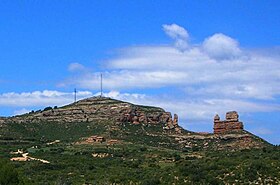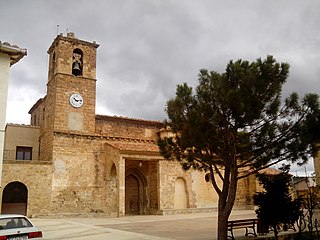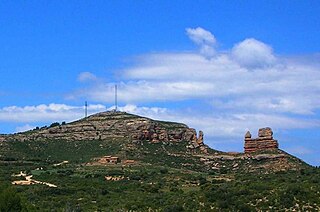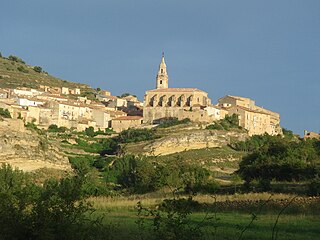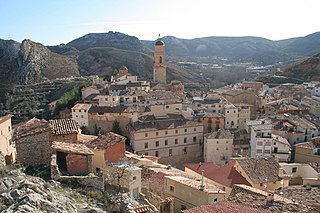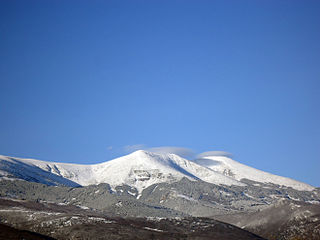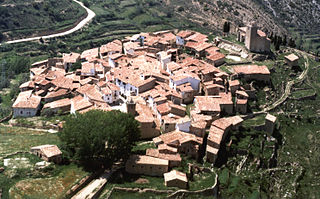| Sierra Carrascosa | |
|---|---|
NE end of Sierra Carrascosa with the Guerrero Romano rock formation | |
| Highest point | |
| Elevation | 1,214 m (3,983 ft) |
| Listing | List of mountains in Aragon |
| Coordinates | 40°42′15″N0°21′12″W / 40.70417°N 0.35333°W Coordinates: 40°42′15″N0°21′12″W / 40.70417°N 0.35333°W |
| Geography | |
| Location | Maestrazgo. Aragon |
| Parent range | Iberian System, Eastern zone |
| Geology | |
| Mountain type | Sandstone |
| Climbing | |
| Easiest route | From the towns of Villarluengo, Bordón or Castellote |
Sierra Carrascosa is a mountain range in the Maestrazgo comarca of Aragon, Teruel Province, Spain. The highest point in the range is Muela Carrascosa (1,214 m). The Guadalope River flows along the NW side of the range. [1]

Maestrazgo is a comarca in southeastern Aragon, Spain. Its names derives from the Maestrat/Maestrazgo mountain massif that extends to the east to the Comarques of the Valencian Community Alt Maestrat and Baix Maestrat. The most important town is Cantavieja. It is bordered by the Aragonese comarcas of Andorra-Sierra de Arcos, Cuencas Mineras, Comunidad de Teruel and Bajo Aragón, in the north and in the west and Gúdar-Javalambre in the south, as well as with the Castellón Province in the east. Some municipal terms of this comarca are part of the historical region of Lower Aragon.

Here is a list of the administrative comarcas (counties) in the autonomous community of Aragon in Spain. They were officially delimited in 1999, with substantial changes over a previously proposed division.

Spain, officially the Kingdom of Spain, is a country mostly located on the Iberian Peninsula in Europe. Its territory also includes two archipelagoes: the Canary Islands off the coast of Africa, and the Balearic Islands in the Mediterranean Sea. The African enclaves of Ceuta and Melilla make Spain the only European country to have a physical border with an African country (Morocco). Several small islands in the Alboran Sea are also part of Spanish territory. The country's mainland is bordered to the south and east by the Mediterranean Sea except for a small land boundary with Gibraltar; to the north and northeast by France, Andorra, and the Bay of Biscay; and to the west and northwest by Portugal and the Atlantic Ocean.
